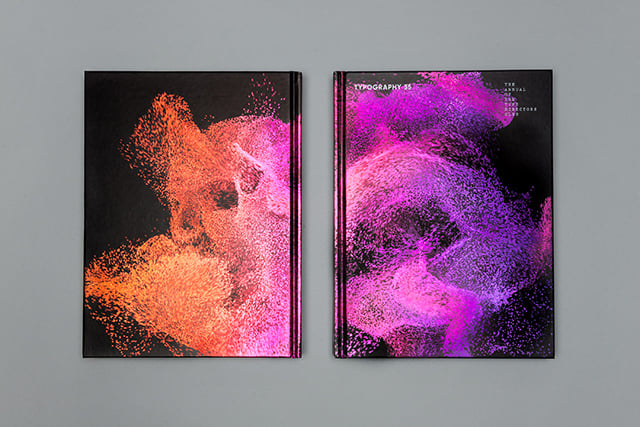This is one of the questions Leland Maschmeyer, Executive Creative Director of COLLINS asked at a presentation he delivered to the Type Directors Club.

An avid science fiction fan, Maschmeyer opened his talk with a reference to the TV 90s show “Sliders” in which the hero travels to other parallel worlds. Each world was slightly different than his original world. In one world, Dinosaurs never went extinct. In another, the British defeated the Americans in the Revolutionary War. In another, men gave birth.

Each show was an exploration of how humanity would respond to slightly different historical and scientific facts. Maschmeyer noted that the writers of Sliders applied a common science fiction technique: take one aspect of what you know, twist it, and push it to its extreme expression. Or, as he summarized, “Be Very.”

Turning his attention to the typography, Maschmeyer discussed how he applied this same science fiction writing technique. “What if we took a similar approach to typography?” he posited. “What if we pushed typography to its limit?” The truth he wished to push to its extreme was one every design student learns:
Typography takes the form of whatever its content is.
He quoted Peter Behrens, a 19th century German industrial designer. “Type is one of the most eloquent means of expression in every epoch of style. Next to architecture it gives the most characteristic portrait of a period. . . .” But what if typography didn’t just change every era or every year, but every millisecond. What if it responded in real time to the changing world around it?

Maschmeyer discussed how he and his team at COLLINS fed open source data into bespoke generative algorithms to create typographic forms. Data about Twitter activity, the weather, traffic congestion, geography and time of day all affected the expressions. As the world changed so did the typography. Watching the results move on screen was captivating and drummed up numerous questions from the audience.
A highlight of the talk was when Maschmeyer shared and discussed his short documentary film about generative typography. Interviews with design luminaries Natasha Jenn, Rob Giampietro, Petr von Blokland, and Prem Krishnamurthy explore how definitions of legibility are changing, hacking typography, and the implications of typography that becomes so aware of its reader and its context that it seem conscious.
The film can be seen here or on the embed below:
Typography is the visual component of the written word. Quality design can make a big difference in communications, because it can affect the way the reader sees and feels about the topic being discussed.